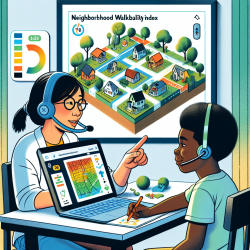Understanding Autism: A Continuous Spectrum
Recent research titled "Quantitative autistic traits ascertained in a national survey of 22,529 Japanese schoolchildren" offers groundbreaking insights into the nature of autism spectrum disorders (ASD). Conducted using the Japanese version of the Social Responsiveness Scale (SRS), this study reveals that autistic traits are continuously distributed across the population, challenging the traditional categorical diagnostic models.
Key Findings and Implications
The study found that the distribution of autistic traits in the Japanese population is skewed but continuous, with no natural cutoff to distinguish affected from unaffected children. This pattern mirrors findings in the US and European samples, suggesting a universal continuum of autistic traits.
Key outcomes from the research include:
- Autistic traits are continuously distributed, indicating the need for diagnostic paradigms that recognize this continuum.
- Cultural differences in trait measurement highlight the necessity for culturally calibrated norms in ASD severity ratings.
- Many children with elevated autistic traits do not meet the diagnostic criteria for ASD, urging a reevaluation of current diagnostic systems.
Practical Applications for Practitioners
For practitioners in speech-language pathology and related fields, these findings emphasize the importance of adopting a more nuanced approach to ASD diagnosis and intervention. Here are some ways practitioners can apply these insights:
- Adopt a Continuum-Based Approach: Recognize that autistic traits exist on a spectrum and adjust diagnostic and intervention strategies accordingly.
- Use Culturally Calibrated Tools: Ensure that assessment tools are culturally sensitive and calibrated to the population being served.
- Focus on Individualized Interventions: Tailor interventions to the unique profile of each child, considering both their strengths and challenges.
Encouraging Further Research
This study opens the door for further research into the continuous nature of autistic traits and their implications for diagnosis and treatment. Researchers are encouraged to explore:
- The genetic and environmental factors contributing to the continuum of autistic traits.
- Cross-cultural comparisons to better understand the global distribution of autistic traits.
- Development of diagnostic tools that reflect the continuous nature of autism.
By embracing a data-driven approach, practitioners and researchers can contribute to more accurate diagnoses and effective interventions, ultimately improving outcomes for children with autism.
To read the original research paper, please follow this link: Quantitative autistic traits ascertained in a national survey of 22,529 Japanese schoolchildren.










